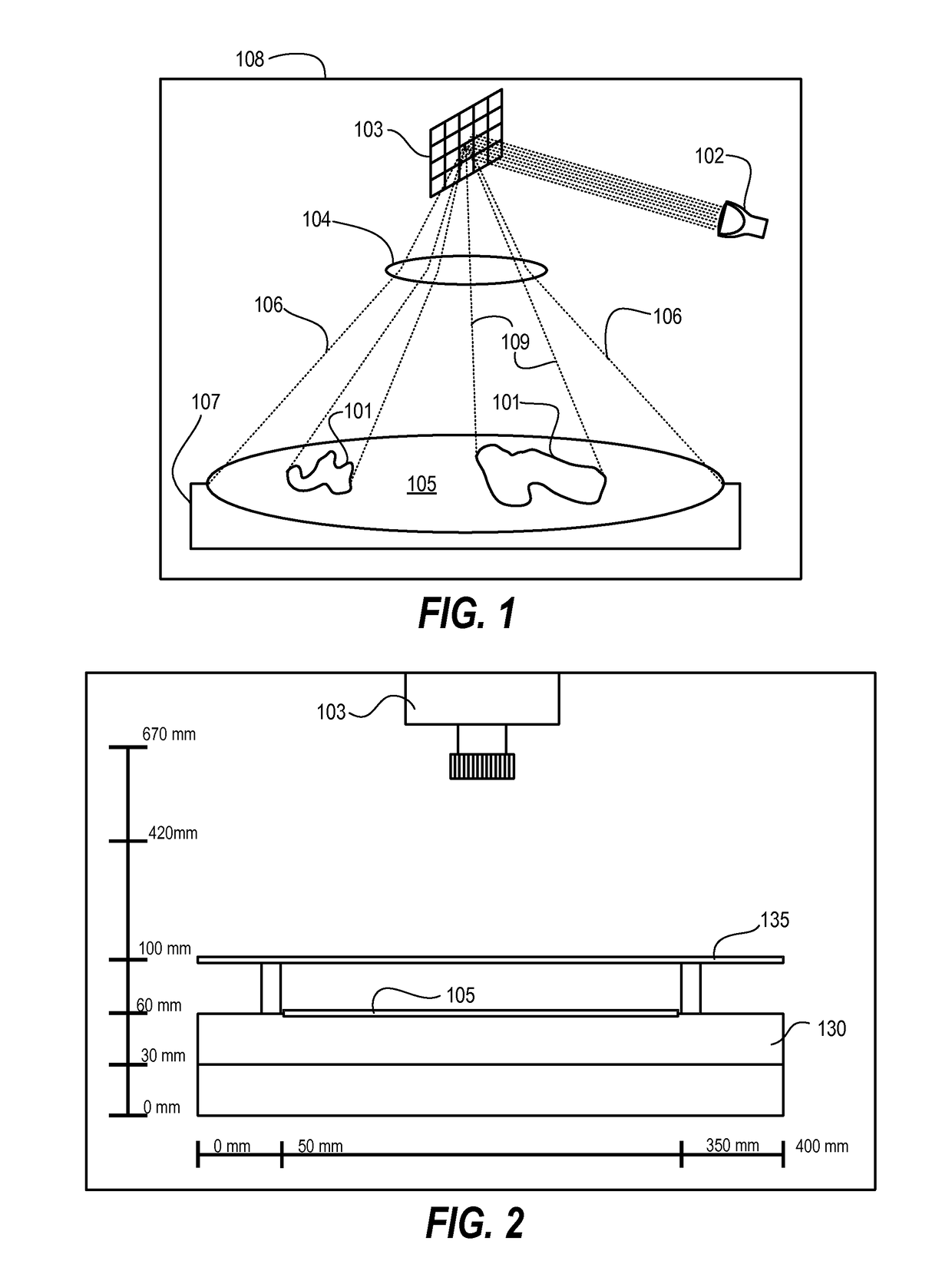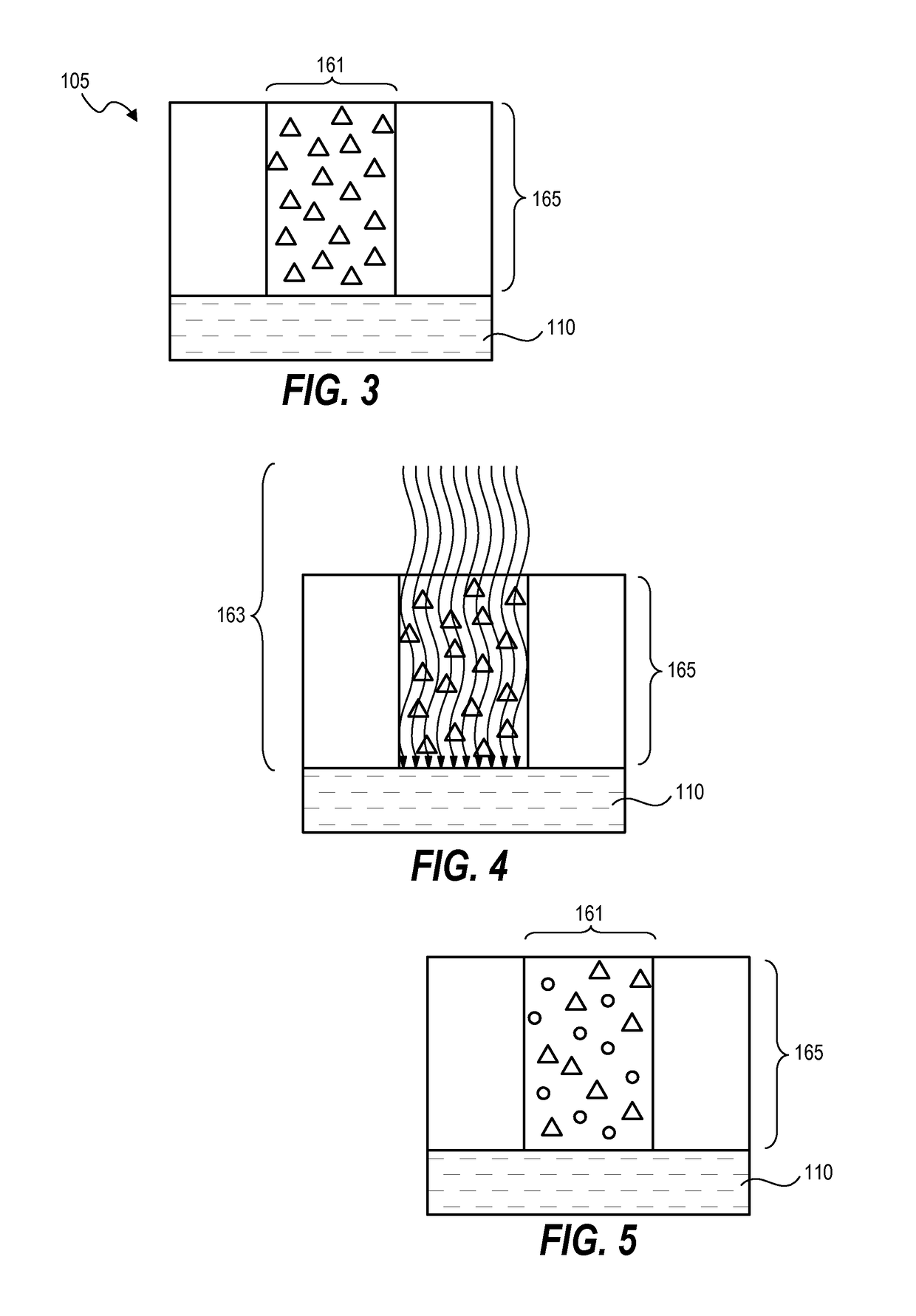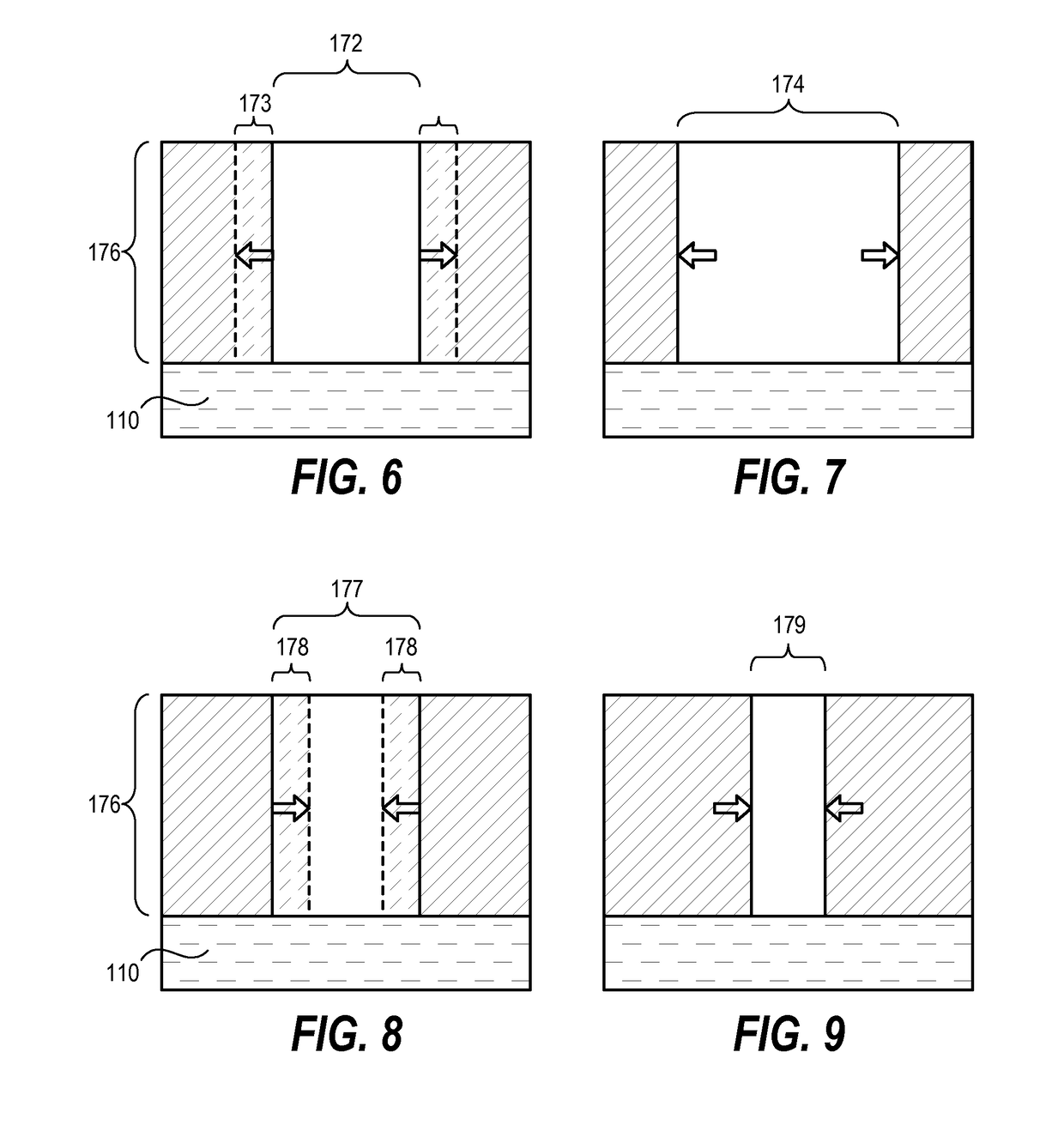System and method for shifting critical dimensions of patterned films
a technology of critical dimensions and patterned films, applied in the field of substrate patterning, can solve the problems of device defects, feature and structure creations that have undesirable critical dimensions (cds) or variations in cds, and achieve the effects of improving yield, fine tuning results, and improving uniformity
- Summary
- Abstract
- Description
- Claims
- Application Information
AI Technical Summary
Benefits of technology
Problems solved by technology
Method used
Image
Examples
Embodiment Construction
[0020]Techniques herein include systems and methods that provide a spatially-controlled projection of electromagnetic radiation, such as light, onto a substrate as a mechanism of controlling or modulating critical dimensions of various features and structures being micro-fabricated on a substrate. Combining such spatial light projection with photolithographic exposure can achieve significant improvements in critical dimension uniformity across a surface of a substrate. In general, methods herein include patterning processes that identify or receive a critical dimension signature that spatially characterizes critical dimension values that correspond to the substrate. A pattern of electromagnetic radiation is projected onto a patterning film coated on substrate using a digital pixel-based projection system. A conventional photolithographic exposure process is executed subsequent to, or prior to, the pixel-based projection. The patterning film can then be developed to yield a relief pa...
PUM
| Property | Measurement | Unit |
|---|---|---|
| wavelength | aaaaa | aaaaa |
| wavelength | aaaaa | aaaaa |
| wavelength | aaaaa | aaaaa |
Abstract
Description
Claims
Application Information
 Login to View More
Login to View More - R&D
- Intellectual Property
- Life Sciences
- Materials
- Tech Scout
- Unparalleled Data Quality
- Higher Quality Content
- 60% Fewer Hallucinations
Browse by: Latest US Patents, China's latest patents, Technical Efficacy Thesaurus, Application Domain, Technology Topic, Popular Technical Reports.
© 2025 PatSnap. All rights reserved.Legal|Privacy policy|Modern Slavery Act Transparency Statement|Sitemap|About US| Contact US: help@patsnap.com



